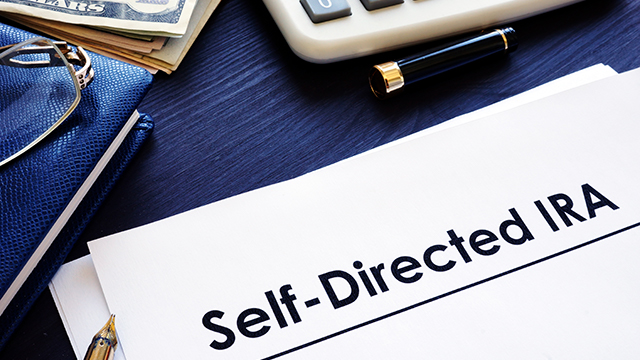An Overview of Self-Directed IRAs, or Conversations I Have With Investors
By Avery E. Neumark | August 26, 2020
Traditional IRAs have been around for 46 years, with the enabling legislation passed by Congress in 1974! Roth IRAs started in 1997 as part of the far-reaching Tax Relief Act of that year. Over time many of the rules and requirements have been modified, like required minimum distributions (RMDs), and it’s likely that further changes will be made to keep up with the needs of the millions of Americans whose primary source of retirement income is held in IRAs. What’s certain is that the importance of IRAs – whether traditional, or Roth or self-directed – will not diminish but continue to grow. It’s worth keeping in mind that according to the Employee Benefit Research Institute, of the 25.8 million IRAs they reviewed, the total combined assets exceeded $24.6 trillion.
A quick review of the present status regarding required minimum distributions (RMDs) for most IRAs is in order. Simply put, the recently enacted SECURE Act stipulates that the age for mandatory RMD (previously age 70.5) be advanced to age 72; and the Covid-19 related CARES Act of 2020 waived the RMD for any IRA in 2020. Consult your tax advisor with questions in this regard.
Over the past several years, informed investors have become increasingly interested in placing alternative investment assets into their holdings via a self-directed IRA (SDI). These retirement investment vehicles usually hold a broader range of investment options and, as such, are good for diversification purposes. Hobbyists often use them, or those with a deep connection to a cause or industry that they understand well, and in which they feel their investment can have both an impact and produce a better-than-average ROI. SDIs share the same eligibility requirements as traditional or Roth IRAs but are comprised of assets such as real estate, precious metals, mineral rights, LLC interests and even cryptocurrency. They require a custodian willing to hold non-traditional assets, and there are some assets that don’t qualify including collectibles, life insurance or a primary residence. In general SDIs have a higher level of risk because they are largely comprised of less liquid assets. They are also more costly, as I’ll explain later, and more complex to direct.
Issues With Setting Up and Maintaining Control of SDI
There are a number of issues involved with setting up and maintaining control over an SDI, including:
- Accepting the increased possibility of asset value loss due to many factors but especially because of the volatility underlying some asset classes like real estate.
- Accepting the risk of subordinating highly secure cash returns to the returns on alternative investments. I tell clients, “If you need to draw on your IRA for cash to live on in retirement, then an SDI is likely not for you.”
- Finding the appropriate custodian – the required intermediary between you and the investment. This administrator and record keeper is not an investment advisor or an assessor of risk. This link to non-bank SDI custodians may be of interest - https://www.irs.gov/retirement-plans/approved-nonbank-trustees-and-custodians.
- Accepting your own role. The investor is responsible for assessing risk, reporting changes in value prior to distributions and ensuring the legitimacy of the investments to avoid prohibited transactions (more on this below.) That’s a tall and sometimes costly order.
For these issues and others, the SDI investor has to appreciate the time and effort necessary to set up and manage the SDI, and to have the discipline to attend to the timely and accurate maintenance of books, records and filings.
Directing the Investment’s Activities
Once an SDI is established there are also the challenges of directing the investment’s activities, including:
- Ensuring investments meet IRC regulations especially regarding prohibited transactions. A good example: the SDI owns a condo (a permissible transaction) but a family member lives in the condo and pays rent (the family member is a disqualified person and thus the investment is prohibited.) Another common mistake: lending money or extending credit against the value of an SDI asset. This too is prohibited.
- Because the IRS requires an updated valuation of IRA assets annually (that the custodian prepares), the investor is responsible for completing a fair market value report and securing the required supporting paperwork such as appraisals, tax bills and K1s from LLC or private placement administrators. This can be an onerous exercise in documentation with its own set of costs.
- Complying with the RMD starting at age 72. As stated earlier, SDI assets may not be as liquid as those in a traditional IRA. Therefore the investor has to anticipate and instruct the custodian on what to do. Steps might include a revaluation as assets may have lost value, and additional money might need to be raised to meet the RMD. If an asset has to be liquidated, a reappraisal becomes likely with its own processing costs. Further, with real estate assets, a partial liquidation to meet an RMD may trigger a re-registration of the asset – in essence a cascading cause and effect that can also be costly.
- Some investments in SDI, like real estate, may yield UBTI that may result in unanticipated tax liabilities.
Conversations With Clients About an SDI
When speaking with my clients about an SDI, the conversation first deals with the importance of diversification, and then moves to the creation of a roadmap to establish the SDI and to set expectations. It is often at this step when we discover that the client has an investment passion, an abiding interest or hobby that he or she can afford to invest in. This is often where the value of a particular SDI lies, and I’m always glad when I see it.
Not long after setting up the SDI, my conversation with clients moves to assessing the impact of strategic moves. The question I get at this stage is, “I want to do this with my investment. How do I do it?” Asking for advice, from me as a tax accountant, or from an investment advisor or attorney, is always a smart move.
Then the conversation ultimately shifts to a distribution and the steps involved in meeting the requirements and securing the underlying documentation. Having a clear-eyed appreciation for this final step, and taking the time to prepare for it, is an example of the discipline that I mentioned above.
SDIs are for informed investors with financial aptitude who have the means to withstand losses and the discipline to see their investments through up and down markets. If that personality portrait fits you, then perhaps you should have that SDI conversation with your advisors.
Click here to continue to read Private Client Insights, August 2020.
About Avery E. Neumark
Avery E. Neumark, CPA, JD, LL.M, is a Senior Consultant at Marks Paneth LLP. Mr. Neumark is an attorney with 40 years’ experience specializing in employee benefits and executive compensation, as well as ERISA, retirement and health and welfare planning, and compensation consulting. He has particular expertise in both for-profit and nonprofit sectors, and in serving high-net-worth individuals. His prior experience in professional services firms includes various leadership and management roles; he also specialized in... READ MORE +




